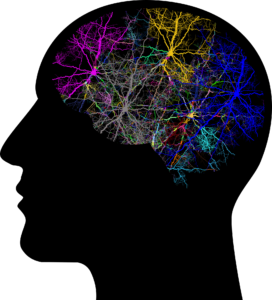Obsessive Compulsive Disorder (OCD) comes in many variations and levels of intensity depending on the person’s unique hardwiring. In a broad sense, OCD often is associated with a need to repeat certain behaviors or thoughts.

People with OCD often feel stuck in these helpless cycles. If OCD goes untreated, it’s easy to become overwhelmed with believing change is impossible. This can lead to increased anxiety or even depression. Irvine Christian Counseling offers effective treatment options to help individuals break free from these cycles and regain control over their lives.
The media portrays OCD with a narrow focus, but the truth is this mental health issue is complex in nature. A medical professional can help you diagnose your OCD and recommend a path for treatment. It’s critical to first understand the cause since OCD behaviors can be somatic, neurological or behavioral. If you have been diagnosed with Obsessive Compulsive Disorder, there’s a chance it can be treated with Behavioral Therapy.
Behavioral Therapy for OCD
Behavior Therapy (BT) looks to change potentially self-destructive tendencies through structured interventions. The methods are tailored to the patient’s specific needs, but sometimes the therapy uses a “reward” to reinforce positive behavior, “punishment” to reinforce negative behavior or “extinction” to suddenly stop a behavior.
These tools are leveraged to increase the desired action and decrease the undesired action. This treatment is not a one-size-fits-all and plans must be designed to fit a patient’s strengths and/or interests for maximum effectiveness.
The examples below are fictitious, but describe a few examples of Behavior Therapy in action.
Jared is a 22-year-old college student that still lives with his parents. His ADHD makes leaving the house in the morning to go to class extremely complicated because he finds himself lost in his thoughts and coming up with worst-case scenarios.
His therapist suggests a few actions to overcome his ADHD like putting a schedule on the fridge, packing his backpack the night before and placing it near the door, and setting multiple alarms in the morning. These might seem like insignificant steps to you, but they help Jared to avoid thinking about possible negative outcomes in his day.
Karla is a 30-year-old woman who just received a job promotion three months ago. Karla always had a flair of OCD like turning the door knob three times before leaving her house and a few other small things. However, since landing this promotion she has begun vacuuming the house constantly.
 It has started to consume her time at home. Her therapist instructs her to set 30 minutes on her timer and stop vacuuming when the timer goes off. She also enforces an 8:00 pm vacuum cut-off time. This can be monitored by tying a cord around the closet door knob where the vacuum is stored.
It has started to consume her time at home. Her therapist instructs her to set 30 minutes on her timer and stop vacuuming when the timer goes off. She also enforces an 8:00 pm vacuum cut-off time. This can be monitored by tying a cord around the closet door knob where the vacuum is stored.
Brandon is a 29-year-old man who can’t stop thinking about a girl he dated. She suddenly stopped returning his phones and texts after three dates. Now his mind is swimming with thoughts about why she dropped him, if she’s with someone else, what she’s really thinking.
Because his mind is consumed with these thoughts, his productivity at work begins to tank and he hasn’t had a deep connection with anybody in his community. His therapist recommends that he reach out to a trusted friend and set up time for coffee, movie or dinner.
Since his thoughts are influencing him negatively, the therapist also tells Brandon to wear a rubber band around his wrist and gently pop it every time he notices his thoughts veering down the wrong road. This exercise is meant to channel his thoughts in a positive direction. In addition, he is challenged to create a list of life-giving activities he can do to keep him from focusing all his thoughts and energy on her.
These examples barely scratched the service of what a behavioral therapist might suggest for a patient to practice in their daily life. These behaviors, when implemented consistently, can be extremely effective in managing the symptoms of obsessive-compulsive disorder.
If the person with OCD continues to experience escalating anxiety when the behavior is disrupted, other options may need to be researched including administering medicine, psychotherapy and other forms of neurological testing to fully understand the OCD.
Underlying Structure
 The womb is a place of safety for babies. Normally, the delivery process is the first traumatic experience for baby as it transitions from life in the womb to an entirely new life. Not only are infants not emotionally structured at birth, but there’s no physical power to stop or avoid traumatic experiences. A baby that experiences trauma may develop a host of defense mechanisms in order to protect itself.
The womb is a place of safety for babies. Normally, the delivery process is the first traumatic experience for baby as it transitions from life in the womb to an entirely new life. Not only are infants not emotionally structured at birth, but there’s no physical power to stop or avoid traumatic experiences. A baby that experiences trauma may develop a host of defense mechanisms in order to protect itself.
Because the neocortex hasn’t fully formed to understand trauma, all responses are done out of reflex and depend on the severity of the trauma. A child can become lethargic and stare at a wall with empty eyes and no emotion after being traumatized. This child may seem more reserved or disconnected from the world and their feelings because of the sheer level of trauma he has had to endure.
Of course, one of the possible results of trauma is OCD. The repetitive nature of OCD can give a feeling of control, which for a person whose life seems out of control, this is comforting. As a child becomes an adult, these behaviors and thought patterns become ingrained into our brains. Fortunately, science has proved it is possible to rewire our brains over the course of time and consistent practice.
Rewiring the Brain
First, it’s important to identify and be aware of the thoughts circulating in our minds. Defense systems are normally automatic, so it takes an intentional effort to change the way we operate. It takes work, but it’s worth it. It’s critical to progress to sharpen your awareness of what’s happening internally when an emotional response is triggered.
For example, let’s say you see your neighbor and you feel those familiar waves of anxiety come flooding in. Your instinct might be to avoid your neighbor due to your feelings. In these moments it can be beneficial to ask, “I noticed my anxiety increased when I saw my neighbor. What would be causing this?” You may figure out that your neighbor reminds you of an abuser in your past or there could be underlying resentment for something that neighbor did to you?
If it’s revealed to you that your neighbor reminds you of an old abuser, but those emotions have no foundation for your current reality, you can easily take control of your mind the next time you see your neighbor. Once you notice those feelings, begin taking deep breaths and say to yourself, “This is my nice neighbor Jennifer, not my old abuser.”
Get in the habit of saying this to yourself as you take deep breaths. Over the course of time, your brain becomes trained to be less anxious around your neighbor. It’s natural to assume things of others based on our observations and experiences.
An angry look on a friend’s face has many meanings, but if we are trained to think everything is directed at us, the default will be to imagine the look directed at us. It doesn’t take much to make a mountain out of a molehill. Our minds are dynamic and can create a million different scenarios that do nothing but rob us of joy and peace.
 Nobody is a mind reader. Even if someone tells you what’s on their mind, it doesn’t necessarily make it true. Take for an example a man who abuses his daughter and immediately says sorry afterward. What is the daughter going to believe? The remorse might seem genuine.
Nobody is a mind reader. Even if someone tells you what’s on their mind, it doesn’t necessarily make it true. Take for an example a man who abuses his daughter and immediately says sorry afterward. What is the daughter going to believe? The remorse might seem genuine.
Children who have experienced abuse become experts at reading the room and identifying who is safe and who is not. This attentiveness might be meaningful, but it becomes exhausting as it continues and eventually impedes a person’s emotional health. In order to dissect these complex situations, a trained therapist will help focus on being aware of what’s going in the body in response to emotions and what situations are triggering these emotional reactions.
Internal awareness is the key to success here. Understanding is achieved when a person has the power to stop and ask, “Where are these thoughts or emotions coming from?” A therapist is the perfect person to help navigate through pain points in the past as it is normally trauma that triggers distinct emotional reactions and defense mechanisms.
Think of trauma that hasn’t been processed as items left on your floor in the middle of the night. You can’t really see it, so you end up bumping into it on your way to the bathroom. In therapy, you can shed light on what you are bumping into that’s triggering emotional responses and learn how to move it out of your way to avoid future crashes. Trauma narratives cannot be erased, but there are steps to take to find freedom from some of the impact trauma has had.
If you hear a song that brings strong emotional reactions you can ask yourself, “What is that all about?” As you begin to reflect you might realize it was the song that was playing when you asked a boy to dance with you and he rejected you. You can then speak truth into the situation by saying, “Yes, I admit that was painful for me as a young girl, but it happened years ago and it won’t define me today.”
Recognize, reflect, and redirect is a useful tool for these triggers. Of course, severe trauma might not be handled this way. A professional therapist can help work through those experiences on a more intricate level. Behavioral Therapy is powerful and it works for taking thoughts captive and replacing them with the truth. If you, or someone you know, is facing OCD, it could be time to enlist the help of a trusted counselor. Irvine Christian Counseling is here to guide you through the process. Your story isn’t over yet!
“Venetian Blinds”, Courtesy of Sheila Tostes, Flickr.com, CC BY 2.0 License; “Vacuuming”, Courtesy of The Creative Exchange, Unsplash.com, CC0 License; “Brain”, Courtesy of GDJ, Pixabay.com; CC0 License; “I See You”, Courtesy of Shine Tang, Unsplash.com, CC0 License
-
Kate Motaung: Curator
Kate Motaung is the Senior Writer, Editor, and Content Manager for a multi-state company. She is the author of several books including Letters to Grief, 101 Prayers for Comfort in Difficult Times, and A Place to Land: A Story of Longing and Belonging...
DISCLAIMER: THIS ARTICLE DOES NOT PROVIDE MEDICAL ADVICE
Articles are intended for informational purposes only and do not constitute medical advice; the Content is not intended to be a substitute for professional medical advice, diagnosis, or treatment. All opinions expressed by authors and quoted sources are their own and do not necessarily reflect the opinions of the editors, publishers or editorial boards of Irvine Christian Counseling. This website does not recommend or endorse any specific tests, physicians, products, procedures, opinions, or other information that may be mentioned on the Site. Reliance on any information provided by this website is solely at your own risk.




